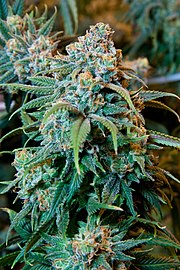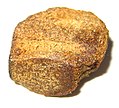
Colorado Marijuana Sales Surpass $1 Million On First Day: Shop Owners
Call it "Green Wednesday."
Pot shop owners in Colorado claim they made over $1 million in sales statewide on the first day of legalized recreational marijuana sales alone, according to Denver's 9News. Nationwide, the legalized pot industry is expected to bring in a reported $2.34 billion in 2014, including both medical and recreational sales.
Most of the 24 shops that opened Wednesday were in Denver. Owners in the city expressed concern about taking in large amount of cash, since federal banking regulations currently prohibit banks from working with the marijuana industry while the drug remains classified as illegal by the federal government.
“We all know this needs to be fixed because there is not one good reason why these businesses are not allowed to have banking accounts -- only bad reasons: security concerns and accountability concerns,” Mike Elliott, executive director of the trade association Medical Marijuana Industry Group, told KDVR.
A solution may soon be reached, but while the industry grapples with how to handle its cash, Colorado is banking on pot: with an eighth of an ounce currently selling between $35 and $70 after taxes, the state estimates that the retail marijuana industry will bring in $67 million in tax revenue.
The first $40 million generated by the state excise tax is dedicated to school construction, and the rest is slated for marijuana regulation.
- Swiss hemp beer uses
blossomsTypical nutritional analysis
of hulled hemp seeds[10]Calories/100 g 567 kcal Protein 30.6 Carbohydrate 10.9 Dietary fiber 6.0 Fat 47.2 Saturated fat 5.2 Palmitic 16:0 3.4 Stearic 18:0 1.5 Monounsaturated fat 5.8 Oleic 18:1 (Omega-9) 5.8 Polyunsaturated fat 36.2 Linoleic 18:2 (Omega-6) 27.6 Linolenic 18:3 (Omega-3) 8.7 Gamma-Linolenic 18:3 (Omega-6)
Eighteen states and the District of Columbia have legalized cannabis for medical use in state laws.[79][80] The United States Supreme Court has ruled in United States v. Oakland Cannabis Buyers' Coop and Gonzales v. Raich that it is the federal government that has the right to regulate and criminalize cannabis, even for medical purposes and even if the state legalize it. Canada, Spain, The Netherlands, France,[81] Italy, Czech Republic[82] and Austria have legalized some form of cannabis or extract containing a low dose of THC for medicinal use.[83] Recently, Uruguay has taken steps towards legalising and regulating the production and sale of the drug.
[84]
















